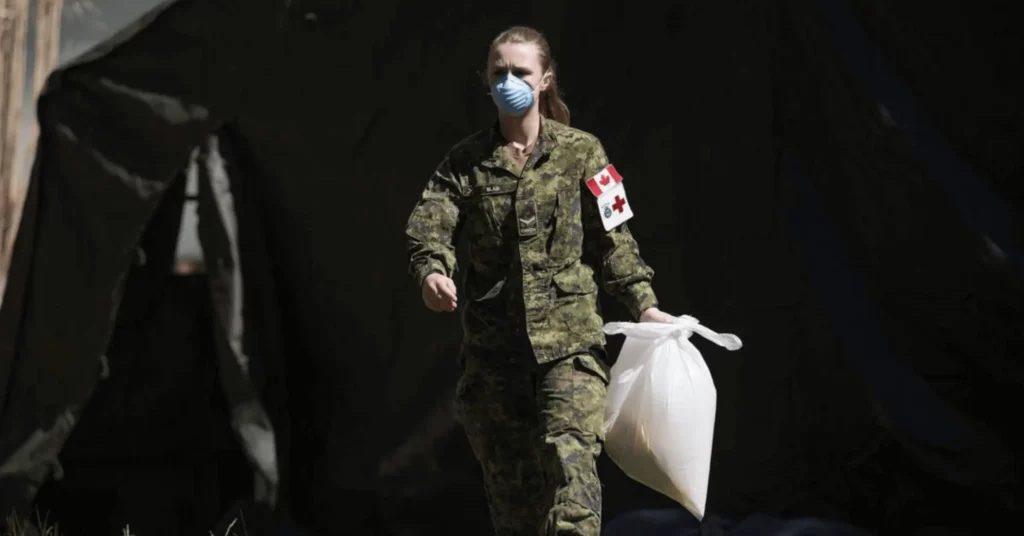As originally posted on the Toronto Star by By Amit Arya and contributors Amina Jabbar and Vivian Stamatopoulos on Thu., Aug. 27, 2020
Imagine if the Ministry of Education in Ontario didn’t mandate a minimum number of staff to look after children in daycares. Would one early childhood educator ever be expected to care for 30 toddlers in a single shift? What about 60 toddlers? We don’t run our daycares understaffed with these ratios, even when someone calls in sick. Legislation doesn’t allow it.
In comparison, staffing regulations in Ontario nursing homes have been woefully inept for decades, even prior to COVID-19. As per the minimum requirement, facilities need no more than one registered nurse on site, regardless of the number of people living in the home. Existing regulations also do not mandate a minimum ratio of personal support workers (PSWs) to nursing home residents.
As a result, many nursing homes have long been understaffed. A nurse may be looking after 30 residents in the day, and around 60 residents overnight. PSW shortages are at a crisis point, where one PSW may be caring for 10 to 15 residents during the day and up to 30 residents overnight. To make matters worse, most PSWs are hired as casual and part-time employees, earn little more than minimum wage, and need to work multiple jobs to make ends meet. Not being hired full-time also means not receiving benefits or sick leave, and creates a system which devalues care primarily provided by women.
So when COVID-19 ravaged through nursing homes, many of these essential front-line workers chose to leave. Who could blame them? They were stressed, stretched, and poorly compensated at the outset. Then, to add insult to injury, few homes provided front-line workers appropriate access to masks and other personal protective equipment to ensure their safety and that of the residents.
In July, the Ontario Health Coalition released data showing 95 per cent of health workers in nursing homes still reported staffing shortages. Undoubtedly, these shortages continue to dangerously compromise the care of our seniors. In most cases, front-line workers can’t ensure basic care is provided, such as bathing, feeding and changing. Opportunities to provide emotional support to seniors are “non-existent” despite an epidemic of loneliness and depression created by COVID-19.
The above tragedy is compounded by the fact that family members, who helped fill in crucial gaps in care prior to the pandemic, remain blocked from regular access. These circumstances leave residents doubly vulnerable. Insufficient front-line staff, and no family around to help and advocate.
So here we are, with a second wave of COVID-19 feared to arrive in the fall. And the Ontario Ministry of Long-Term Care has done little to address these critical staffing problems.
To ensure vulnerable seniors receive the essential care they need, the Ontario government must act immediately on the following urgent priorities:
First, front-line workers need improved pay and sick leave. The temporary pandemic pay increased the hourly wages of front-line workers in nursing homes by $4 per hour, but ended Aug. 13. That top-up needs to become permanent to increase the number of people willing to do front-line work. Health workers should also not lose income if they are themselves unwell and need time off. That comes from providing them sick leave which will undoubtedly prevent the spread of COVID-19.
Second, because of consistent understaffing, the province continues to allow workers from temporary employment agencies to work in multiple homes. Many nursing home operators are incentivized to hire those temporary workers to save on the cost of employment benefits. The use of temporary workers needs to stop to prevent the spread of COVID-19 between nursing homes, both for the safety of workers and seniors.
Third, the government needs to urgently establish and enforce minimum staffing levels. Staff must be skilled to care for seniors who often have multiple serious medical conditions. Homes will also need a reserve workforce to help manage future COVID-19 outbreaks. The government must require homes to be transparent about staffing levels, and step in immediately if concerns arise.So long as systemic understaffing continues, nursing home seniors remain vulnerable to neglect and abandonment. The military report released in May — a report created after Canadian Armed Forces personnel were sent to help in five Ontario nursing homes — highlighted the dangers to seniors from staffing shortages during the first wave, where understaffing led to tragic outcomes. It’s high time for the government to act now to protect the vulnerable.

